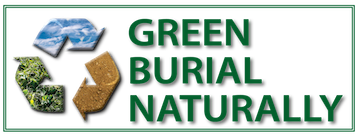Soil is a miraculous substance. It's made of inorganic material (tiny bits of weathered rock) and organic matter, what in the garden you would call humus. Soil sustains land life yet is an incredibly thin covering on the earth. To create a good garden you ideally mix compost, defined as decayed or decaying organic matter used as fertilizer, into the 8 to 12 inches of topsoil. Digging allows air to penetrate, the compost nutrients to spread more evenly and water to sink in. Then you plant seeds in the very top of this cultivated layer.
Plants grow tall so they can thrust their leaves into the air but they also need air in the environment around their roots. They depend on microbes in the soil to render the compost useful (like us cooking our food), help keep the soil loose, and protect them from harmful pathogens and microorganisms. These are oxygen-loving bacteria and fungi; without air they can't multiply and do their job. Digging the soil before and after planting maintains the top foot or so of the garden as a good microbe habitat. Below the topsoil the further you dig into the subsoil, the smaller the portion of organic material, the fewer microbes and the less active it is.
When we think of compost we think piles of autumn leaves, but it's not just plants that provide useful organic matter. Anything once living can be composted. When I was a child we carefully kept animal matter out of the food scrap bin. I always thought it would somehow make our compost pile impure, but animal bits compost just fine; in fact there's more nutrients in animal bits than in plant bits. The reason you keep them out is because "unfortunately their smell will act like a magnet for any rats, mice, foxes, raccoons, or cats in the neighborhood (or even coyotes and bears, depending on where you live), who will ransack the compost to eat them."*
When I wrote about Vermont Bill H.3 to change minimum depth of human graves from 5 to 3.5 feet I began by wondering what made grave depth important enough to be a requirement for green burial along with no embalming, no vaults, only biodegradable caskets or no containers at all. I learned that we should bury the body as high up as feasible in the ground because then it can decompose efficiently into the surrounding soil and become part of that wonderful landscape we wish to be under. Yet if the idea is to plant the body among the microbes, why don't we simply dig it into the topsoil, put a decent layer of soil on top and be done with it?
I started off with the garden to fertilize your mind with images of lettuce or bean seeds swelling in the dark soil, putting out roots and sprouts. Now we get to the ick, because two primary roles of active soil in human burial are to provide a smell barrier and to get rid of pollutants and diseases. When you bury a human body in the topsoil, the oxygen-loving microbes want to make compost out of it so they get really active, and their work produces odors that lure in other workers to help complete the job. It's these others that are the reason for burying a body deeper in the soil--not the beetles but the animals--raccoons and other scavengers that would dig up the grave. Dogs--yes, even your beloved poodle would become a scavenger. Death at the surface employs all the critters to help dispose of remains as quickly as possible, but we prefer a more sedate schedule so we bury our dead. The microbes in the active soil also break down molecules of substances we consider pollution, and disease organisms which survive death. But these microbes are another story.
According to Michelle Acciavatti, Vermont H.3 co-author, it's generally agreed that 18 to 24 inches of soil above a grave is enough to provide a smell barrier. So an overall grave depth of 3.5 feet "is sufficient to protect bodies from detection from scavengers--there just isn't enough smell to attract them. There certainly is nothing the human nose can detect." It may not be in the most active topsoil but this, she says, represents "the fine line between what we can accept as natural vs. what we accept as respectful to the body and I think right now we are so cut off from nature that that is harder than it should be--think of the people who think the steak they buy shrink-wrapped in grocery stores doesn't come from cows!"
Soil is an ecosystem. The trick to green burial is to fit a human body into that ecosystem and not to isolate it.
* https://www.smallfootprintfamily.com/10-things-you-should-not-put-in-a-compost-pile

